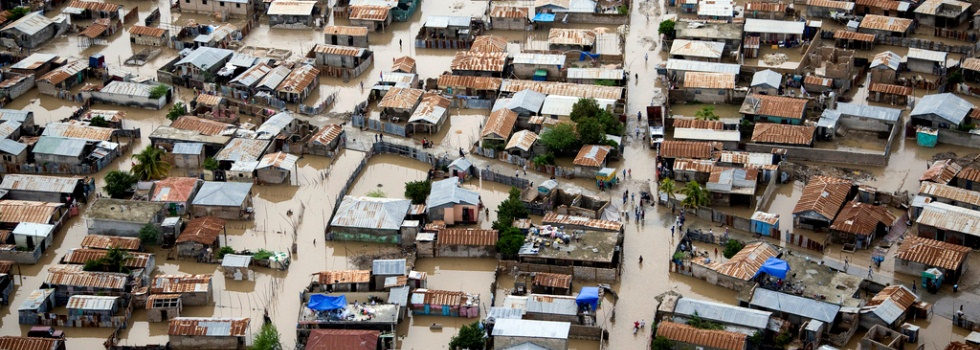
Many had little time to grieve the loss of loved ones who died as a result of Typhoon Haiyan (Yolanda) that struck the Philippines on November 8, 2013. Their focus has been on searching for food, fresh water and a place to sleep. Over 5,000 lives were lost and large numbers of people are still missing, but the death toll would have been even higher if the Philippines did not have regular and accurate warnings issued by meteorological services.
Advances in weather forecasting and risk assessments in recent years have allowed countries and their citizens to better prepare for natural hazards. National Meteorological and Hydrological Services, also known as NMHSs, make a significant contribution to safety, security, and economic well-being by observing, forecasting, and warning of pending weather, climate, and water threats. Working closely with disaster management agencies, the media, and economic sectors, NMHSs help governments prepare for and respond to weather emergencies to reduce the threat of weather-related disasters.
Yet in many areas of the world NMHSs lack the necessary capacity and resources, and in some cases even the political recognition needed to deliver on their critical function of protecting lives and livelihoods. NMHSs in more than 100 countries, the majority of which are in Africa, are in urgent need of modernization. Today, budgets for NMHSs are usually less than 0.03 percent of national gross domestic product (GDP) and the annual public funding globally is about $15 billion.
 A recent World Bank report highlights World Bank Group experience and offers guidance on good practices to help modernization efforts. Weather and Climate Resilience: Effective Preparedness through National Meteorological and Hydrological Services is a synthesis of the experiences of the World Bank, the Global Facility for Disaster Reduction and Recovery (GFDRR) - a World Bank-managed multi-partner initiative - and the World Meteorological Organization (WMO), and other development partners. It aims to increase awareness of the role of WMO and NMHSs in improving national economic performance and supporting sustainable development. The report urges countries to modernize their NMHSs, which could save an average of 23,000 lives a year and provide up to $30 billion a year in economic benefits.
A recent World Bank report highlights World Bank Group experience and offers guidance on good practices to help modernization efforts. Weather and Climate Resilience: Effective Preparedness through National Meteorological and Hydrological Services is a synthesis of the experiences of the World Bank, the Global Facility for Disaster Reduction and Recovery (GFDRR) - a World Bank-managed multi-partner initiative - and the World Meteorological Organization (WMO), and other development partners. It aims to increase awareness of the role of WMO and NMHSs in improving national economic performance and supporting sustainable development. The report urges countries to modernize their NMHSs, which could save an average of 23,000 lives a year and provide up to $30 billion a year in economic benefits.
“There is a lot we can - and must - do to reduce the impact of disasters,” said Rachel Kyte, the World Bank’s Vice President for Sustainable Development. “As the intensity and frequency of extreme weather increase as a result of climate change, we have to shift our focus to prevention and preparedness.”
Weather and Climate Resiliencewas co-launched by the World Bank/GFDRR and the World Meteorological Organization at the WMO Headquarters in Geneva, Switzerland, bringing together key partner organizations to present and discuss the importance of countries investing in well-equipped and fully staffed NMHSs in order to better prepare for natural hazards. Opening the event, Dr. Elena Manaenkova, Assistant Secretary General at the World Meteorological Organization, stressed the need to continue the work on this agenda, and noted the WMO’s role in leading international cooperation in developing meteorological and hydrological services, highlighting the organization’s unique mandate across a range of services. Representatives of U.K. Met and MeteoSwiss shared their experiences and discussed how the contents of the report can help guide NMHSs, their ministries and international partners to optimally invest in NMHSs modernization.
The report provides several country examples to illustrate that prevention and preparedness pays off. Since the destructive floods of 2000, Mozambique’s achievements in disaster risk management have led to significantly fewer lives lost due to flooding, making the country a good example of early warning systems in practice. Building on this, the government has recognized that climate change will likely lead to more intense and frequent floods, storms, and droughts, requiring greater national and local preparedness. The Pilot Program for Climate Resilience and the Nordic Development Fund are jointly financing a $22 million project to improve hydro-meteorological information services. Benefitting from GFDRR design and implementation support, the project will help build capacity of relevant government agencies, while also working with them on coordination, information exchange, and early warning delivery.
“Today, thanks to the GFDRR Program more countries will receive support for modernizing their hydro-meteorological infrastructure to better deliver adequate weather and climate services,” said Michel Jarraud, Secretary-General of the World Meteorological Organization.
The World Bank, GFDRR, WMO and other partners will continue working together to strengthen national capacities to develop and exchange reliable, timely and accurate hydro-meteorological forecasts of severe weather events and climate variability. Such information is critical for countries to keep its citizens safe, sustain its economic gains and build a more resilient future.
